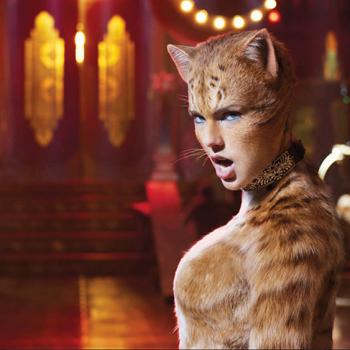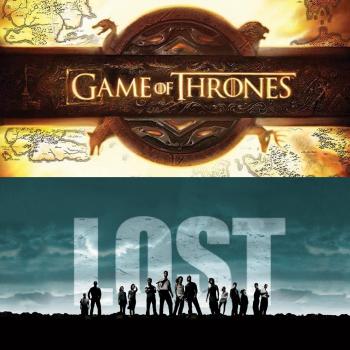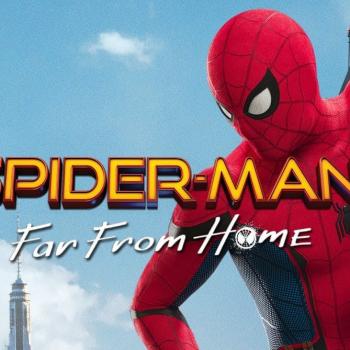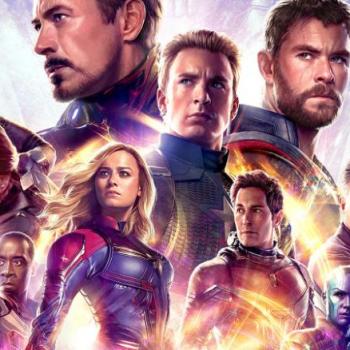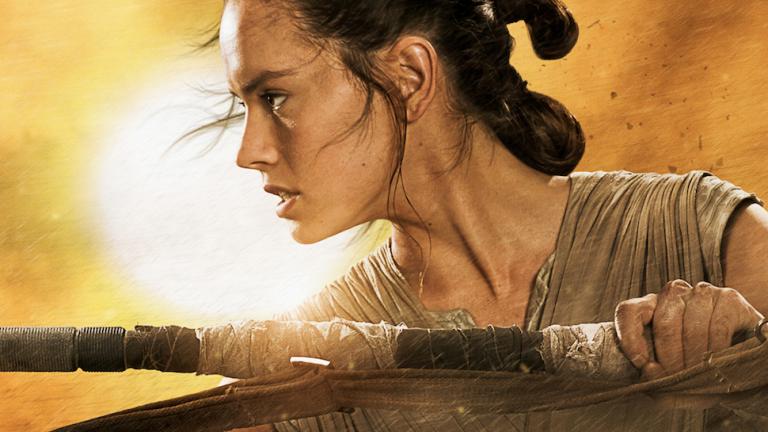
For this series, we’re going to be looking at how the new Star Wars films differ in their fundamental mythology from the original Lucas-helmed trilogy and prequels…and why that’s got everyone in a tizzy.
The Force A-wokens
For a franchise as beloved as Star Wars, there is bound to be controversy over every new installment in what is, essentially, the formation of a uniquely American mythology.
And why shouldn’t there be? If art is what tells us what’s normal, mythology is what tells us what we, as a culture, fundamentally believe.
And for the original Star Wars trilogy—and even the prequels—what we believed in was The Hero’s Journey; The Chosen One. Specifically, in the masculine hero’s journey, embodied in the men of the Skywalker line: Luke, and his father, Anakin. Who, whether they were on the light side of the Force or the dark, were winning winners who always won.
The new movies, however, are not exclusively about the Skywalker line. They’re purposely deconstructing “the Chosen One” narrative, as surely and spectacularly as Fry and Laurie ever did.
The new films are, fundamentally, changing the mythology. They are changing what we, as a culture, believe.
This, more than anything, is what I think fanboys object to when they start grousing about The Last Jedi. When the cry of: “Not my Star Wars!” rings out at the visceral level of the true believer against the heretic.
It makes sense: because Star Wars is mythology. Star Wars is belief. Not in the Force, or even some lazy dualistic–Manichaeism, or (God forbid) midichlorians…but in the Inherent Rightness of the Cool Guy Doing Things. And if we’re going to get right down to it, in the belief of Mr. White in the role of Cool Guy. Emphasis on Mister. Emphasis on White. Here’s why.*
* PLEASE NOTE: In the following, I am going to attempt to “read” the iconography of the Star Wars franchise through the eyes and archetypes that a white audience, and particularly a white male audience might be predisposed to see. What follows is an attempt to see through that lens.
Teasing Out Mythologies
When The Force Awakens came out, the very casting hailed a movement towards this new mythology. In the official teaser trailer, we begin with a man’s deep voice. Check: this is our usual mythology. Good. We’re even looking over what we might suppose are the sand dunes of Tatooine. Great! This is where both Anakin and Luke began. Fantastic: we’re on our way to making another movie about the same beliefs.
But then, from the bottom of the screen, a black man pops up, dressed as a Stormtrooper, without his helmet. This is also fine. First: still male. Good. Second: This is the 21st Century. We’re a little woke that our brothers of African descent like Star Wars, too.
However, and crucially, since Finn (as we later name him) is dressed as a Stormtrooper, and since he is black—he’s still an Other. We get to feel like superior white guys because we’re letting an Other—in this case a black man—onto the good guy’s side. And he’s allowed because he was a servant in an ancient and faceless regime (not us) and we are letting him in, like the super woke people we are. So long as Finn starts remorselessly killing his former co-workers, he can play on the white…er, right side of the rebellion.
A few more shots: we see the new droid, BB-8. Amazingly cute. We see helmeted Stormtroopers. Yay! We can boo and hiss! We see Rey on a speeding vehicle…and let’s pause here for a second. Because Rey is something new, too.
There’s two major pieces of iconography that allow the True Believer in the Star Wars franchise to allow in the female character of Rey. First: her dress is intentionally reminiscent of Luke’s A New Hope ensemble, which is itself reminiscent of a full Jedi Master uniform, with this alteration—whereas Jedi Masters wear priestly (dare I say, “feminine”) robes, Rey, a woman, is wearing pants. Which is to say, between her non-painted face, her square jaw, her pulled back hair (she’s actually wearing a helmet in our first glimpse of her), and her pants:
The costume designers have done everything possible short of giving Rey a mastectomy to make Daisy Ridley look like a man.
Second, we see Rey speeding away on a hovercraft that looks like Luke’s original speedster tipped on its side. So, the art department has not only dressed her in robes that look like an even more “masculine” form of Luke, but they’ve practically put her on his vehicle, too.
The implication is clear: Rey, from her name to her styling to her vehicle is essentially a guy. With this one alteration: where even Luke had a blaster to kill space-rodents with, Rey gets a less dangerous stick. I want to reiterate: the girl gets a stick. So, it’s alright, True Believers. We know she’s a girl, and she’s cool because she’s Just Like Luke…but we all know that she isn’t ever going to be as cool, because she knows her place and it’s with a stick.
Then we get the heart of the mythology. Enough with these black guys and tomboys…let’s see the New Han Solo! And there’s Oscar Isaac, passing for a white man, in the iconic Rebellion orange jumpsuit, in an X-wing—and All Is Right With the World. Our mythology is safe.
But our mythology, being fundamentally dualistic, needs a villain. Ah! Here comes Vader-lite in our first glimpse of Kylo Ren, dressed all in black so we can properly hate him. With an awesome (if somewhat impractical) red fire lightsaber—yay lightsabers!—with a fire crossguard to boot! Huzzah! Everything’s The Same As It Was!
And then the Millennium Falcon! Over (possibly) Tatooine! Firing at TIE fighters! And the yellow font! Hooray! Our mythology is back!
That’s what we were ichnographically teased.
But what did The Force Awakens actually deliver?
Second Verse, Same as the First?
The smart thing about The Force Awakens is how much it actually sleeps. Others have commented, and extensively, on how the movie relies on nostalgia—hitting on reveals of the Falcon and Chewie and Leia and glimpses of Luke, and the Quest for Luke’s lightsabre, and the music! O! The music! “The New Order” is just the Old Order, with the same Stormtroopers. And in the mythology of “bigger must be better,” we’ve graduated to a Death Planet.
But what makes a female protagonist and a black male sidekick (and a whiny white villain) work is how they’re framed by the movie. And most notably, they’re framed as being accepted by our white heroes in the film.
Let’s take a look:
We’ll begin with Finn. As mentioned before, he’s framed as an Other—in this case, he’s framed as the Noble Savage—“Tonto” to Oscar Isaac’s fast-talking Dameron Poe. It’s important that Isaac, a Latino actor, passes for white here. His role as the new Han Solo helps that point of view. And because our Han Solo-Cool White Guy Doing Things Snarkily stand in decides to accept, and even name Finn, the Other is accepted as one of the crew. But it’s important to note that in his iconography, Finn is only ever a sidekick. He is, frankly, the Chewbacca of the relationship. And this is going to be important when we critique The Last Jedi.
It may be worth noting that the only other significant black actor in the film is Lupita Nyong’o, here extensively disguised as an Other: the CGI alien Maz Kanata.
Like Han Solo-lite welcomed Finn, so Rey gets an even better welcoming from Han Solo himself. The filmmakers further tie her in to the One True Mythology by giving her not only the Falcon but also Luke’s lightsaber. Further, it’s frequently repeated that Han sees Rey as the daughter, as the child he wished he had. And speculations ran wild whether the orphan Rey on the Tatooinesque desert planet could be a Skywalker in disguise.
Hence, between being welcomed by every important white male, and being dressed androgynously, Rey became okay. Our iconography told us so.
Emo Kylo Ren
But what about our villain? This is where those looking for hints of heresy in the Star Wars mythology may have missed the signs of what was to come in The Last Jedi.
As Leah Libresco Sargeant beautifully detailed in her article:
So, how can a boy be a threat? Because he’s a child, or, at least, a childish man, who is wielding more power than he knows what to do with. From his tricked out triple-beamed lightsaber to the military might of the First Order, Kylo Ren has titanic powers at his command, but no real command of himself.
This is our legitimate scion of the Skywalker line. This is the actual heir of Han Solo. This is the only new white male lead in the franchise.
And this is our villain.
In this iteration of the mythology, the dangers that our heroes will face aren’t clear-cut, black-and-white, good-and-evil, light side vs. dark side of the force. As Pogo said: “We have met the enemy, and he is us.”
So, to a certain extent, for every grown-up, white fanboy with a bone to pick about the new Star Wars films…he’s absolutely right. The latest chapters in the Star Wars mythology are turning around and pointing a finger at you. The First Order is made up of all white men (and one female Stormtrooper…but we’ll get to her next time).
While all the heroes of this new Resistance are female, and people of color, and female people of color…and even the “white guy” is Latino, folks. It’s enough to set a conspiracist twitching.
But the question then becomes:
So?
O, Brave New World!
The times, as they say, are a-changing. And I doubt there’s a person alive today who isn’t cognizant that things are shifting in our society. Among Catholics and conservatives, then, the default position is one of resistance. And yet, I think it’s worth it to ask: Why?
When I lived in Massachusetts, that hotbed of Puritanism, where the only diversity away from the English-Irish settlers was an influx of Brazilians and Portuguese who, nevertheless, “passed for white,” I honestly didn’t think much about diversity at all. My culture did not challenge me, because my neighbourhood was homogenous. Insofar as I thought of people of color at all, I thought in generally sympathetic terms—but nothing particularly concrete. As one might feel sympathy for reports of atrocities in other nations; but also the relief that you, in your little corner of the world, don’t really have to do anything about it.
Similarly, as I alluded to elsewhere, when I was a teacher in Massachusetts, living out a lifestyle that was deemed “acceptable for women because = children,” I didn’t particularly think that I was lacking any opportunity because I was a woman. Therefore, male narratives didn’t bother me, since I was conditioned to read between the lines and be grateful for whatever part of the narrative my sex was granted. Since I, myself, had a greater degree of autonomy than many of the other women I knew, I presumed all women had sufficient autonomy and that we, collectively, didn’t need much of a hand up.
I was, and am, privileged.
And I understand the problems of using that word. I watched my own white father forced out of jobs in the name of diversity, and we suffered as a family for it. I do know the legitimate struggles that my white brothers go through, as everyone goes through, in this Valley of Tears. And I do sympathize in regards to the Star Wars franchise the desire not to have the mythology changed, not to have this toy taken away, to retain some space, some treehouse where no girls, no homo, no disability, no grown-ups need apply. “Can’t we just have this? Can’t we be the heroes for a little while longer? Can’t we all just rest now, Buffy?”
But the thing is: Star Wars is an American mythology. And America is more than just white guys doing cool things, shooting first, and ruling the world. I’m a woman, and I like Star Wars. I’d like to see myself up there. Black people exist in America. Chinese women exist in America. Older women exist in America. Latinos exist in America. And gay men and women, and people with disabilities, and people who aren’t special—we’re all here, too. We’ve been here for awhile. You’re just noticing us now.
Please don’t run away. We promise, we won’t take your lightsaber. We’ve got one already. All we wanna do is be allowed to play.
Next Up: Why We’re Hung Up On Holdo
 What would you like the Pop Feminist to review next? Become my patron on Patreon!
What would you like the Pop Feminist to review next? Become my patron on Patreon!
Image courtesy of Disney 2017



